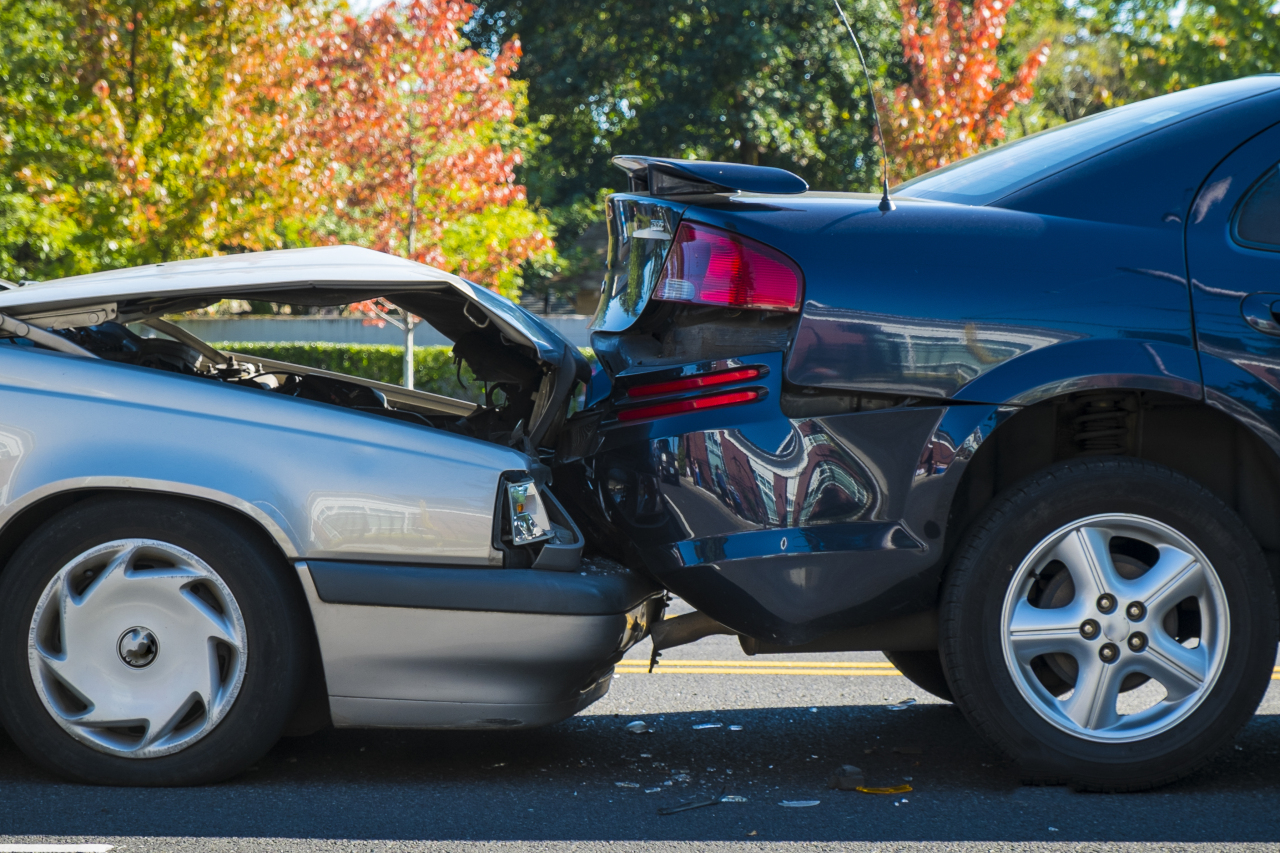I’ve Been Rear-Ended! How Fast Was That Other Car Going? Here’s the Formula.
Posted July 25th, 2016.
Categories: Personal Injury, The Calculating Lawyer.

So you’re sitting there in your car at the stop sign, obeying the law, and then….whack! You’ve been rear-ended by another driver who was texting his friend about tonight’s important gathering at the local pub. Upon impact, your car careens across the intersection.
How fast was the other driver going? Here’s how to figure that out.
You’ll need four pieces of information for this formula: (1) the weight of other driver’s vehicle which we’ll call W1, (2) the weight of your vehicle which we’ll call W2, (3) the velocity of the other driver’s vehicle after the crash or post-impact, which we’ll call Vp1, and (4) the velocity of your vehicle as it careened through the intersection post-impact which we’ll call Vp2. In our formula, we will refer to the impact speed or velocity of the other driver as V1. The formula is:
![]()
So let’s try a hypothetical case. Assume that you were driving a Chevrolet Malibu weighing 3,300 pounds at the time of the accident. You were rear-ended by a Ford Explorer weighing 4,900 pounds. Assume also that, following impact, your vehicle (which had initially been stopped at a stop sign) moved across the intersection at the speed of 20 miles per hour. The Ford Explorer, post impact, moved across the intersection in the opposite direction at 35 miles per hour.
![]()
![]()
In other words, the driver of the Ford Explorer was traveling at about 48.5 miles per hour at the moment of impact. If the accident occurred in a 35 mile per hour speed zone, this would be a significant piece of information, ascertained through a relatively simply formula.
Obtaining vehicle weights is very easy. Such information is published online and in owner’s manuals as part of the listed specifications (“specs”) for the vehicles. As for determining the post-impact velocities of the vehicles, such information can be gathered in a number of different ways. There are forensic techniques, for example, such as skid marks, debris evidence, and physical damage measured against other timed events. There are witness observations. There may be physical damage to a guard rail, tree, building or other structure where a vehicle actually comes to rest, and the damage itself may reflect speed.
In a personal injury lawsuit, a driver may also admit to a particular post-impact speed as part of a pre-trial discovery response (for example, in responses to an interrogatory or deposition question or a request for admissions). And there are other formulas for ascertaining post-impact speed to be discussed in a future blog.
